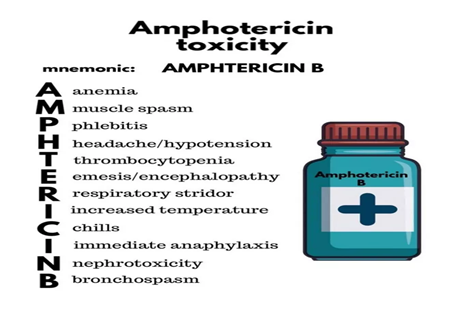A nurse is administering 4 mg of hydromorphone to a client by mouth every 4 hr. The medication is provided as hydromorphone 8 mg per tablet. Which of the following actions is appropriate for the nurse to take?
Dispose of the remaining medication while another nurse observes.
Store the remaining half of the pill in the automated medication dispensing system.
Place the remaining half of the pill in the unit-dose package.
Return the remaining medication to the facility's pharmacy.
The Correct Answer is A
A. Dispose of the remaining medication while another nurse observes:
This is the correct choice. When a nurse administers a fraction of a tablet, it is not safe or appropriate to store the remaining portion for future use, even if another dose is scheduled. Hydromorphone tablets are meant to be taken whole, and cutting or breaking them can lead to inconsistent dosages. It's important to follow safe medication administration practices and dispose of the unused portion while another nurse observes, ensuring proper disposal.
B. Store the remaining half of the pill in the automated medication dispensing system:
This choice is incorrect. Storing a fraction of a tablet in the automated medication dispensing system is not appropriate. The system is designed for intact medications, and splitting tablets could compromise the accuracy and safety of future doses.
C. Place the remaining half of the pill in the unit-dose package:
This choice is incorrect. Placing a partial tablet back into a unit-dose package could lead to confusion and potential administration errors in the future. The medication packaging should reflect the correct and complete dosage as prescribed.
D. Return the remaining medication to the facility's pharmacy:
This choice is incorrect. Returning a partially used tablet to the pharmacy is not advisable, as the pharmacy cannot ensure the tablet's integrity or accurately verify its dosage. Medication storage and handling standards are in place to ensure patient safety, and using a fraction of a tablet may compromise those standards.
Nursing Test Bank
Naxlex Comprehensive Predictor Exams
Related Questions
Correct Answer is B
Explanation
A. Pedal edema
Explanation: Pedal edema (swelling of the feet) is not a typical sign of an acute infusion reaction to IV amphotericin B.
B. Fever
Explanation: Fever is a common sign of an acute infusion reaction, indicating an inflammatory response to the medication.
An acute infusion reaction to IV amphotericin B is most commonly characterized by fever and chills, as well as other flu-like symptoms such as headache, muscle or joint pain, and sometimes a dry cough. Fever is a key indicator of an acute reaction to amphotericin B, and the presence of fever during or after administration should raise concern and prompt the nurse to take appropriate action, including notifying the healthcare provider and discontinuing the infusion.
Pedal edema and hyperglycemia are not typically associated with acute infusion reactions to amphotericin B and are not common manifestations of this type of reaction.
C. Hyperglycemia
Explanation: Hyperglycemia (high blood sugar) is not typically associated with an acute infusion reaction to IV amphotericin B.
D. Dry cough
Explanation: A dry cough can be a symptom of an acute infusion reaction, potentially indicating irritation or inflammation of the respiratory tract.

Correct Answer is D
Explanation
A. Another formulation of potassium should be given IV: The type of potassium formulation isn't the issue in this scenario.
B. Potassium chloride should be diluted in dextrose 5% in water: While potassium chloride can be administered in different solutions, the primary concern here is the infusion rate, not the specific diluent.
C. The client should be treated by giving potassium by IV bolus: The concern here is the rate of administration, not the route. Potassium is commonly administered through an IV infusion rather than a bolus due to the risk of cardiac arrhythmias associated with rapid administration.
D. A nurse is caring for a client who is to receive potassium replacement. The nurse should clarify the prescription with the provider because the potassium infusion rate is too rapid.
The prescription indicates that the client should receive potassium chloride 30 mEq in 0.9% sodium chloride 100 mL IV over 30 minutes. This rate of administration is too fast for potassium replacement and could lead to potentially serious complications, such as hyperkalemia or cardiac arrhythmias. The typical recommended rate for potassium replacement is 10-20 mEq/hour, and this prescription exceeds that range.
Whether you are a student looking to ace your exams or a practicing nurse seeking to enhance your expertise , our nursing education contents will empower you with the confidence and competence to make a difference in the lives of patients and become a respected leader in the healthcare field.
Visit Naxlex, invest in your future and unlock endless possibilities with our unparalleled nursing education contents today
Report Wrong Answer on the Current Question
Do you disagree with the answer? If yes, what is your expected answer? Explain.
Kindly be descriptive with the issue you are facing.
